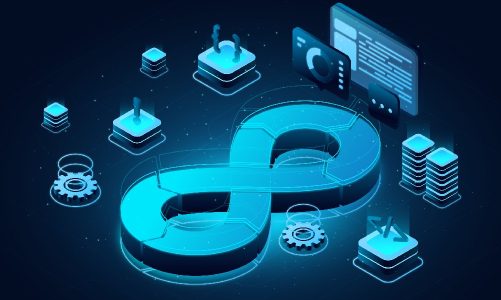In the manufacturing industry, achieving a balanced production line is crucial for efficient and effective operations. When the tasks and resources are properly aligned, it leads to reduced waste, increased productivity, and improved throughput. One method that has proven to be effective in achieving this balance is V-Curve optimization. In this blog, we will explore the concept of production line balance, the significance of achieving balance, and how V-Curve optimization can play a pivotal role in mastering this art.
In manufacturing, production line balance refers to the distribution of tasks and resources across the line to ensure a smooth and continuous flow of operations. When the line is balanced, each process or station operates at its optimal level, resulting in a minimal number of idling or overloaded resources. This balance directly impacts operational efficiency, cost-effectiveness, and customer satisfaction.
Table of Contents
The Importance Of Line Balancing For Efficient Operation
Line balancing is crucial for various reasons. Firstly, a balanced line minimizes idle time and reduces waiting time, maximizing resource utilization. This not only optimizes the use of labor, machinery, and equipment but also minimizes unnecessary expenses. It also helps in meeting production targets, improving delivery times, and reducing lead times, leading to enhanced customer satisfaction and loyalty.
V-Curve optimization is a proven technique that helps in achieving production line balance. It uses a graphical representation of the relationship between line efficiency and resource utilization, commonly known as the V-Curve. By analyzing this curve, manufacturers can identify the optimal balance point where efficiency is maximized with minimal resource utilization.
Understanding The V-Curve
The V-Curve is a graphical representation that depicts the relationship between line efficiency and resource utilization. It consists of two arms, one representing line efficiency and the other representing resource utilization. As the utilization of resources increases, line efficiency also improves initially, but after a certain point, further increases in resource utilization result in diminishing returns and reduced efficiency. The goal of line balancing is to identify the optimal balance point where efficiency is maximized.
The Relationship Between Line Efficiency And Resource Utilization
Line efficiency refers to the ratio of actual output to the maximum possible output. As resource utilization increases, more tasks can be completed in a given time frame, resulting in improved efficiency. However, if resources are pushed beyond their optimal utilization, it can lead to bottlenecks, overburdened processes, and reduced efficiency.
How The V-Curve Helps Identify The Optimal Balance Point
The V-Curve helps manufacturers visualize the trade-off between resource utilization and line efficiency. By plotting resource utilization and line efficiency on a graph, they can identify the turning point or the elbow of the curve. This turning point represents the optimal balance point where further increases in resource utilization would result in diminishing returns. Manufacturers can adjust resource allocation to achieve this balance point, ensuring maximum efficiency without overburdening resources.
Factors Affecting Production Line Balance
Several factors influence production line balance, and understanding these factors is essential for effective optimization. Task variation, for example, refers to the differences in time and complexity required to complete various tasks. Uneven task distribution can lead to imbalances in resource utilization, resulting in efficiency losses. Similarly, cycle time, or the time required to complete each task, also affects line balance. Longer cycle times can lead to process bottlenecks and decreased overall efficiency.
How These Factors Impact The V-Curve
These factors directly impact the shape and position of the V-Curve. Greater task variation or longer cycle times result in a flatter and lower V-Curve. This indicates that resource utilization needs to be kept lower to achieve optimal efficiency. On the other hand, if tasks are more closely aligned or cycle times are shorter, the V-Curve would be steeper and higher, allowing for higher resource utilization while maintaining optimal efficiency.
Case Studies Illustrating The Effects Of Imbalances In Line Efficiency
To better understand the impact of imbalances in line efficiency, let’s consider a hypothetical case study. Company X has a production line with uneven task distribution, resulting in imbalanced resource utilization. As a result, certain processes continuously experience bottlenecks and delays, affecting the overall efficiency of the line. By applying V-Curve optimization techniques, Company X identifies the imbalance and adjusts resource allocation to achieve a more balanced and efficient line. As a result, they experience increased throughput, reduced lead times, and improved customer satisfaction.
Implementing V-Curve Optimization
To implement V-Curve optimization, manufacturers should follow a systematic approach. Firstly, they need to conduct a thorough analysis of the current production line, measuring line efficiency and resource utilization. This can be done by collecting data on task completion times, resource availability, and overall output. Various tools and techniques, such as time studies, data analytics, and line balancing and V-Curve software like LineView, can assist in this analysis.
Once the data is collected, manufacturers can plot the V-Curve, determining the optimal balance point. Based on this analysis, they can make adjustments in resource allocation, task distribution, or cycle times to achieve better line balance. Regular monitoring and evaluation are also essential to ensure that the achieved balance is maintained.
Tools And Techniques For Measuring Line Performance And Identifying Bottlenecks
Several tools and techniques can aid in measuring line performance and identifying bottlenecks. Time studies involve collecting data on task completion times to identify processes that take longer than others. This helps in identifying bottlenecks and imbalances in resource utilization. Data analytics techniques can be used to analyze large datasets and identify patterns or anomalies in line performance. Furthermore, simulation software can simulate different scenarios and evaluate the impact on line performance and resource utilization.
Strategies For Adjusting Resource Allocation To Achieve Optimal Balance
Adjusting resource allocation is crucial for achieving optimal balance. By redistributing tasks or adjusting cycle times, manufacturers can ensure that the workload is evenly distributed across the line. This prevents overburdening of certain processes and reduces waiting time. It may also involve cross-training employees to increase flexibility and resource availability. Additionally, automation and robotics can be used to streamline certain processes and improve overall resource utilization.
Benefits And Limitations Of V-Curve Optimization
The use of V-Curve optimization offers several benefits. Firstly, it enables manufacturers to achieve optimal line balance, resulting in increased efficiency, reduced waste, and higher throughput. By identifying the optimal balance point, resources can be utilized more effectively, leading to cost savings. V-Curve optimization also helps in meeting production targets, reducing lead times, and improving customer satisfaction.
However, there are also some limitations to consider. Implementing V-Curve optimization requires a thorough understanding of the production processes and accurate data collection. The success of optimization depends on the accuracy of the assumptions made during analysis. Moreover, external factors such as demand fluctuations or supply chain disruptions can affect the achieved balance, necessitating periodic re-evaluation and adjustment.
Real-World Success Stories Demonstrating The Effectiveness Of V-Curve Optimization
Several real-world success stories highlight the effectiveness of V-Curve optimization. For example, a manufacturing company was struggling with line imbalances, resulting in decreased efficiency and increased lead times. By implementing V-Curve optimization, they achieved a better balance of resources, reduced waiting times, and improved overall throughput. This optimization not only helped them meet increased demand but also reduced costs and improved customer satisfaction.
Conclusion
Achieving a balanced production line is essential for efficient and effective manufacturing operations. V-Curve optimization offers a proven method to achieve this balance by analyzing the relationship between line efficiency and resource utilization. By identifying the optimal balance point, manufacturers can make adjustments to resource allocation, ensuring maximum efficiency without overburdening resources.
Mastering the art of production line balance requires understanding the factors influencing line balance, implementing V-Curve analysis techniques, and adjusting resource allocation accordingly. By harnessing the power of V-Curve optimization, manufacturers can enhance productivity, reduce waste, and improve customer satisfaction. It is an essential tool in the arsenal of any manufacturing organization striving for operational excellence and continuous improvement.
Also Read: What Role Does AI Play In Pharmaceuticals?



